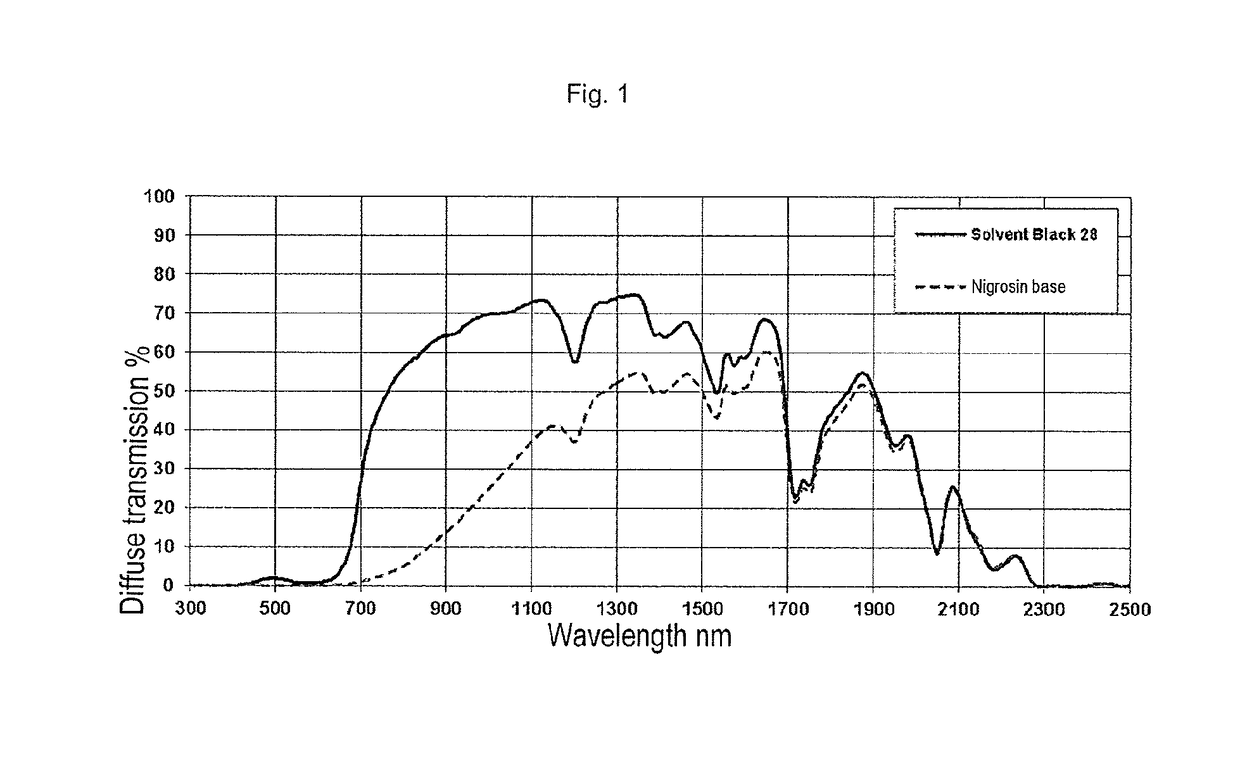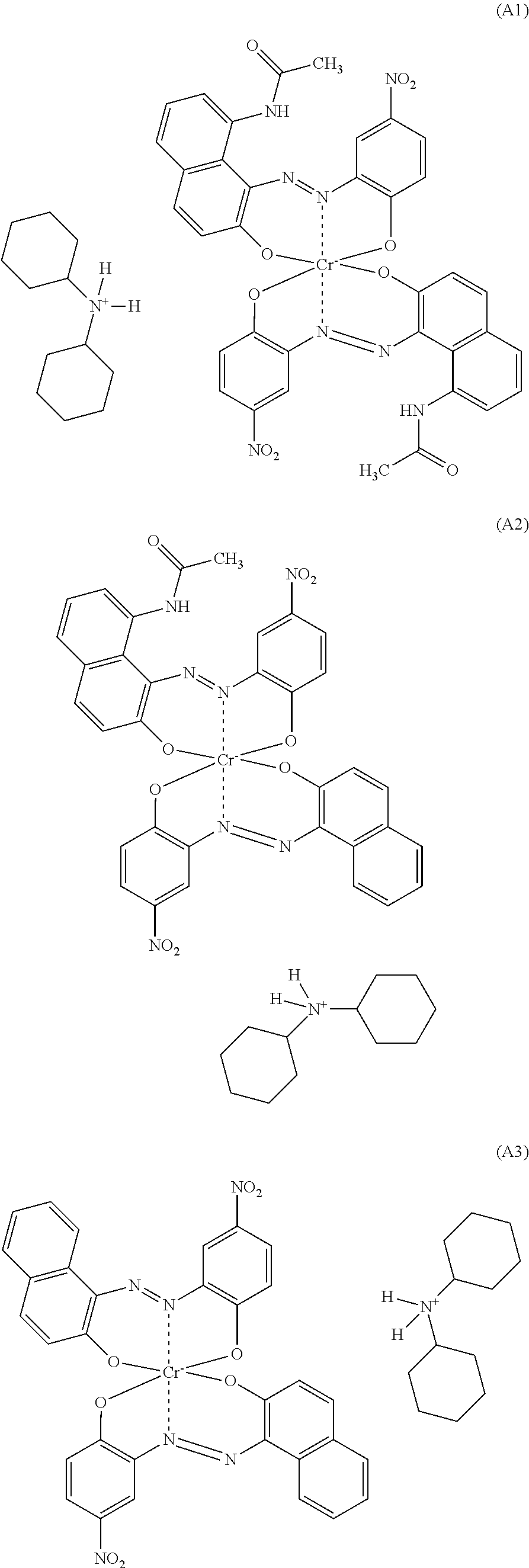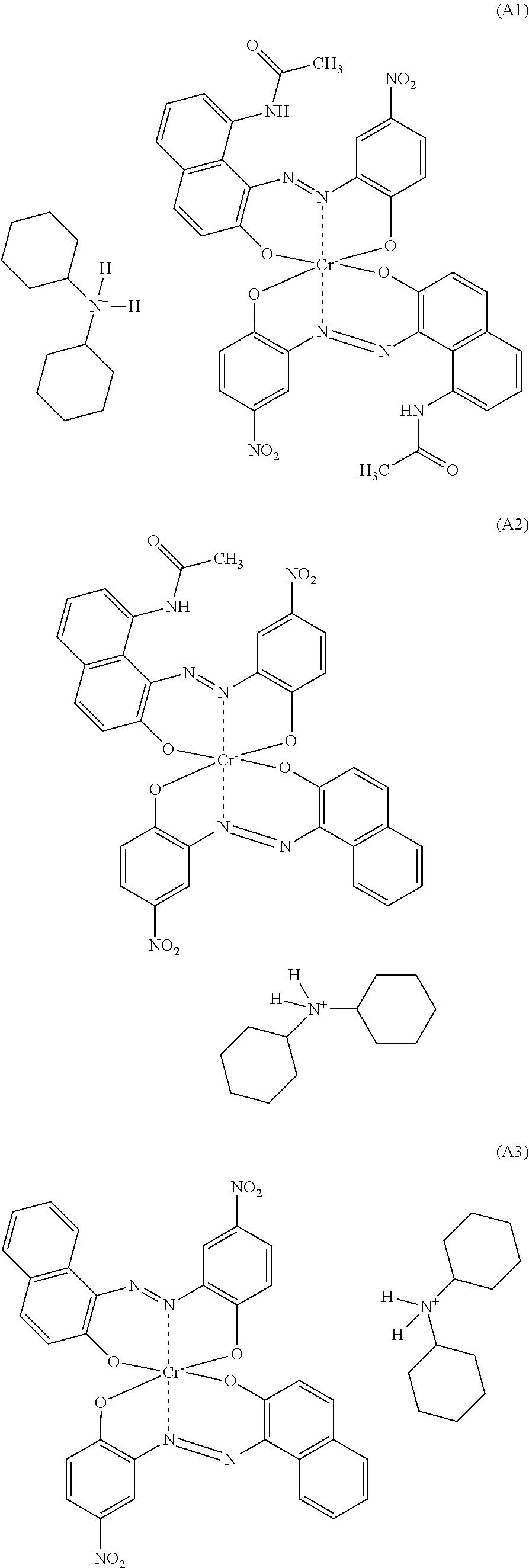Black-colored polyamide composition and production and use thereof
- Summary
- Abstract
- Description
- Claims
- Application Information
AI Technical Summary
Benefits of technology
Problems solved by technology
Method used
Image
Examples
example 1
[0239]99.95 parts polyamide PA6 (Ultramid B3S from BASF) were premixed in a tumbling mixer with 0.05 part Solvent Black 28 (Orasol Black 045 from BASF) for 10 minutes and then extruded and pelletized using a twin-shaft extruder having a diameter of 18 mm and an L / D ratio of 44 at barrel temperature 260° C. For this purpose, the natural-colored polyamide pellets were dried beforehand in a drying oven at 100° C. for 4 hours, such that the moisture content was below 0.1%. For this purpose, the moisture content was determined by means of a thermal balance. The homogeneous pellets obtained were injection-molded on an injection molding machine at melt temperature 260° C., 280° C. and 300° C. to give plaques of thickness 2 mm and of dimensions 45×60 mm, and were assessed both visually and analytically.
[0240]Colorimetry in accordance with DIN 6174 and evaluation in accordance with DIN EN 12877-2 showed a dE at 280° C. of 2.1 and a dE at 300° C. of 4.8. A visual determination of the color di...
example 2
[0244]99.4 parts polyamide PA6 (Ultramid B3S from BASF) were premixed in a tumbling mixer with 0.1 part Solvent Black 28 (Orasol Black 045 from BASF) and 0.5 part titanium dioxide (Kronos 2220 from Kronos) for 10 minutes and then extruded and pelletized using a twin-shaft extruder having a diameter of 18 mm and an L / D ratio of 44 at barrel temperature 260° C. For this purpose, the natural-colored polyamide pellets were dried beforehand in a drying oven at 100° C. for 4 hours, such that the moisture content was below 0.1%. For this purpose, the moisture content was determined by means of a thermal balance. The homogeneous pellets obtained were injection-molded on an injection molding machine at melt temperature 260° C., 280° C. and 300° C. to give plaques of thickness 2 mm and of dimensions 45×60 mm, and were assessed both visually and analytically.
[0245]Colorimetry in accordance with DIN 6174 and evaluation in accordance with DIN EN 12877-2 showed a dE at 280° C. of 2.0 and a dE at ...
example 6
[0254]99.95 parts glass-modified polyamide PA6 (Ultramid B3EG7 from BASF) were premixed in a tumbling mixer with 0.05 part Solvent Black 28 (Orasol Black 045 from BASF) for 10 minutes and then extruded and pelletized using a twin-shaft extruder having a diameter of 18 mm and an L / D ratio of 44 at barrel temperature 280° C. For this purpose, the natural-colored polyamide pellets were dried beforehand in a drying oven at 100° C. for 4 hours, such that the moisture content was below 0.1%. The homogeneous pellets obtained were injection-molded on an injection molding machine at melt temperature 260° C., 280° C. and 300° C. to give plaques of thickness 2 mm and of dimensions 45×60 mm, and were assessed both visually and analytically.
[0255]Colorimetry in accordance with DIN 6174 and evaluation in accordance with DIN EN 12877-2 showed a dE at 280° C. of 1.2 and a dE at 300° C. of 6.1. A visual determination of the color difference at 300° C., by means of a gray scale in accordance with “DI...
PUM
| Property | Measurement | Unit |
|---|---|---|
| Temperature | aaaaa | aaaaa |
| Temperature | aaaaa | aaaaa |
| Percent by mass | aaaaa | aaaaa |
Abstract
Description
Claims
Application Information
 Login to View More
Login to View More - R&D
- Intellectual Property
- Life Sciences
- Materials
- Tech Scout
- Unparalleled Data Quality
- Higher Quality Content
- 60% Fewer Hallucinations
Browse by: Latest US Patents, China's latest patents, Technical Efficacy Thesaurus, Application Domain, Technology Topic, Popular Technical Reports.
© 2025 PatSnap. All rights reserved.Legal|Privacy policy|Modern Slavery Act Transparency Statement|Sitemap|About US| Contact US: help@patsnap.com



